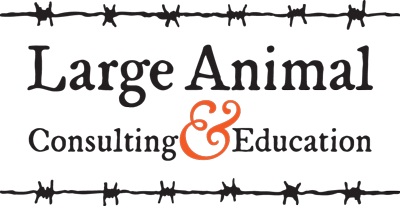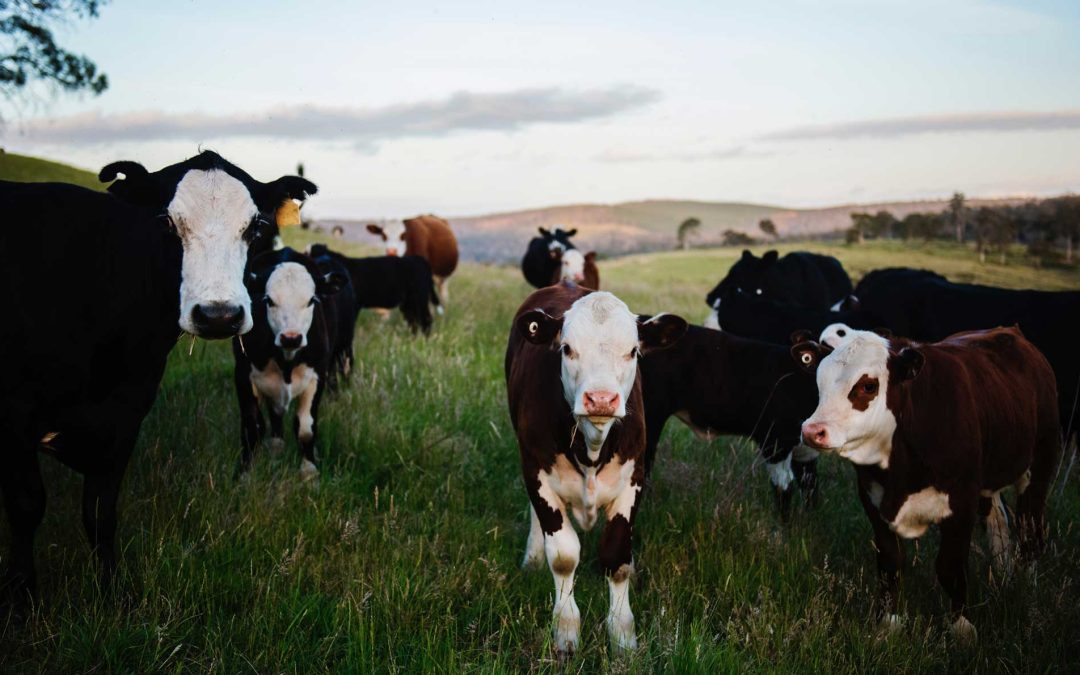As we enter into spring calving season, we plan for the events of calving and make sure everything is in place, but we sometimes forget to have plans for the complications that occur before and after calving, like prolapses and retained placenta. There are three stages of labor and delivery, with the second stage ending with the delivery of the calf. Stage III involves the expulsion of the fetal membranes or placenta and when this does not occur appropriately, future fertility is at risk.
Normally, the placenta is expelled within 6-8 hours after calving. After a difficult delivery or sometimes with no real apparent reason, cattle will retain the placenta for longer than 12 hours after calving. Many studies exist regarding the effect on production parameters of dairy cattle as a result of retained placenta, but there is limited information on its effects in beef cattle. In one study of beef cattle where 13,296 calvings were recorded, retained placenta occurred in 0.37% of cattle which experienced non-C-section calvings. Deliveries were classified as difficult births in 21.7% of cattle which had retained placenta and placental retention was also associated with the delivery of bull calves. In this particular study, retained placenta did not result in a statistically significant reduction in future pregnancy rate, which differs from the effect seen in dairy cattle.
Cattle have a cotyledonary placenta, with the dam and fetus connected via many oval-shaped units called placentomes, which consist of the caruncle (maternal side) and the cotyledon (fetal side). The connection of these two structures is through fingerlike projections called villi and collagen, a connective tissue. In order for the placenta to pass in Stage III of labor, these villous and collagenous bonds must be broken in such a way that minimizes permanent damage to the maternal caruncles to maintain the health of the interior of the uterus. Hormone shifts and the action of white blood cells around the time of calving initiate the start of the release of these attachments while uterine contractions expel not only the calf but also the placenta.
Risk factors associated with retained include difficult calving, premature delivery, abortion, twin calves, fetotomy, Caesarean section, induced delivery, Vitamin E, selenium and carotene deficiencies, and calcium deficiency. Of these, the most common causes encountered in beef cattle include difficult delivery, C-section and induced calving. Difficult deliveries result in trauma to the uterine lining and swelling of the cotyledonary villous attachments, inhibiting their release. This complication is increased when the uterus becomes exhausted after a prolonged labor. I find that cattle producers are often surprised that the placenta is not routinely removed during a C-section. The placenta is only easily removed in 14.2% of cattle at the time of C-section and forcible removal traumatizes the uterine lining. For this reason, we prefer to leave the placenta in place in order to improve the odds of rebreeding.
The risks associated with a retained placenta range from simple unpleasantness and odor of the tissues to infection of the uterus which may limit future fertility to significant illness due to infection and toxins released into the cow’s system which can be fatal. So, when you have a heifer or cow that has one of the risk factors listed above, it is prudent to monitor her closely to make sure she cleans to avoid complications. But how do you know when it’s time to intervene?
Every veterinarian has a slightly different approach to intervention for retained placentas and I encourage you to visit with your veterinarian about his or her preferred strategy. A decision scheme that I use with beef herds is:
- If the placenta is retained longer than 12 hours, the cow should be monitored for attitude and appetite.
- If the cow appears ill at any time (depressed, reduced appetite, etc.), she should be examined by a veterinarian.
- If the cow appears healthy but the placenta is still retained after 3-4 days, a veterinarian should be contacted for advice or examination.
Treatment of retained placenta can be frustrating and there is not a lot of research to help steer us towards consistently reliable methods of treatment. The most common treatments used include manual removal and systemic or intrauterine antibiotics.
Manual removal is frequently practiced and desired by producers because of improved hygiene, aesthetics, odor control and the belief that removal reduces the risk of infection. Instead, manual removal has been shown to result in more severe infections, damage the endometrium, and reduce the function of white blood cells which are important in controlling infection. It is also impossible to be certain that the entire placenta has been removed, with dead tissue often remaining on the interior which cannot be seen from the exterior.
Antibiotic therapy is controversial in the management of retained placenta and uterine infection. According to the USDA-NAHMS Beef 2007-08 study, 0.3 +/- 0.1% of beef cows in the U.S. were treated for retained placenta or uterine infection. Of those, 5.3 +/-2.8% were treated with oral antibiotics, while 95.6 +/-3.0% were treated with injectable antibiotics. In a study of western Canadian cow-calf herds, metritis (uterine infection) was the primary reason for use of antimicrobials in cows during calving season, with injectable preparations used most commonly. Fortunately, we do have systemic antibiotics labelled for the treatment of uterine infection in beef cattle in the United States.
As with all production diseases, the goal of should be management of the population to minimize these postpartum diseases. Herds experiencing poor postpartum uterine health should consider primary factors of calving management and nutrition. Calving management considerations include intervening 1-2 hours after the appearance of membranes, which will aid in the preventing uterine exhaustion from prolonged calving and damage to the endometrium. Prevention of uterine contamination is best achieved by providing a clean calving environment and using cow, equipment and personal hygiene measures when performing obstetrical manipulations. Trace mineral and protein nutrition are of particular importance in maintaining effective cow immunity. Deficiencies of selenium, copper, cobalt and vitamins A, D, E have been associated with delayed uterine involution and therefore are considered important for proper uterine function. In beef and dairy herds, deficient status of zinc and selenium are both associated with an increased incidence of retained fetal membranes. Management of these factors as a matter of rule can go a long way to optimizing heifer and cow recovery after delivery of the calf.

